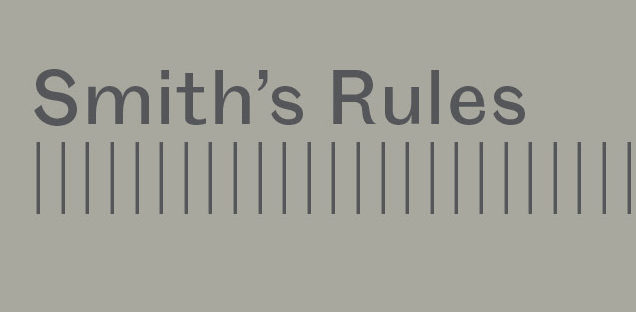Smith’s Rules*
—00
Smith’s Rules should be followed wherever practicable. Exceptions can be made for narrow minds and when the rearrangement of ideas to conform with these rules would prove unreasonable.
—00.1
Smith’s Rules is an ongoing series of ideas concerned with standards and attitudes towards the subject of visual communication.
—00.2
Smith’s Rules intention is to observe and address existing standards of visual language and their graphic representation.
—00.3
Smith’s Rules should offer the opportunity for the reader to contemplate their own ideas and reconsider their philosophical approach
!@££$%^&*()_+
¡€#¢∞§¶•ªº–≠œ∑´®†¥¨^øπ“‘åß∂ƒ©˙∆˚¬…æ«`Ω≈ç√∫~µ≤≥÷
⁄™‹›fifl‡°·‚—±Œ„‰ÂÊÁËÈØ∏”’ÅÍÎÏÌÓÔÒÚÆ»ŸÛÙÇ◊ıˆ˜¯˘¿































